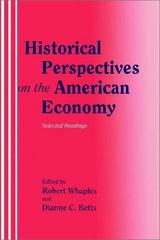Question
Perfectly competitive firm faces P(Q) = P inverse demand curve and its costs are given by a cost function C(Q), assuming that marginal costs are
Perfectly competitive firm faces P(Q) = P inverse demand curve and its costs are given by a cost function C(Q), assuming that marginal costs are positive. Firm is also taxed at rate t per unit of output. 1. Write down the firm's profit function. Identify the choice variable, and the parameter if the firm maximizes the profit. 2. Write down the F ONC for profit maximization. What does this equation solve for? Can you get it explicitly? Discuss. Under what condition does the equilibrium exist? 3. Write down the SOC for profit maximization. Under what condition(s) the profit is indeed maximized? 4. What is the effect of the tax on the equilibrium quantity? Support your answer by a graph. 5. What is the effect of the tax on the maximized profit?
Step by Step Solution
There are 3 Steps involved in it
Step: 1

Get Instant Access to Expert-Tailored Solutions
See step-by-step solutions with expert insights and AI powered tools for academic success
Step: 2

Step: 3

Ace Your Homework with AI
Get the answers you need in no time with our AI-driven, step-by-step assistance
Get Started


